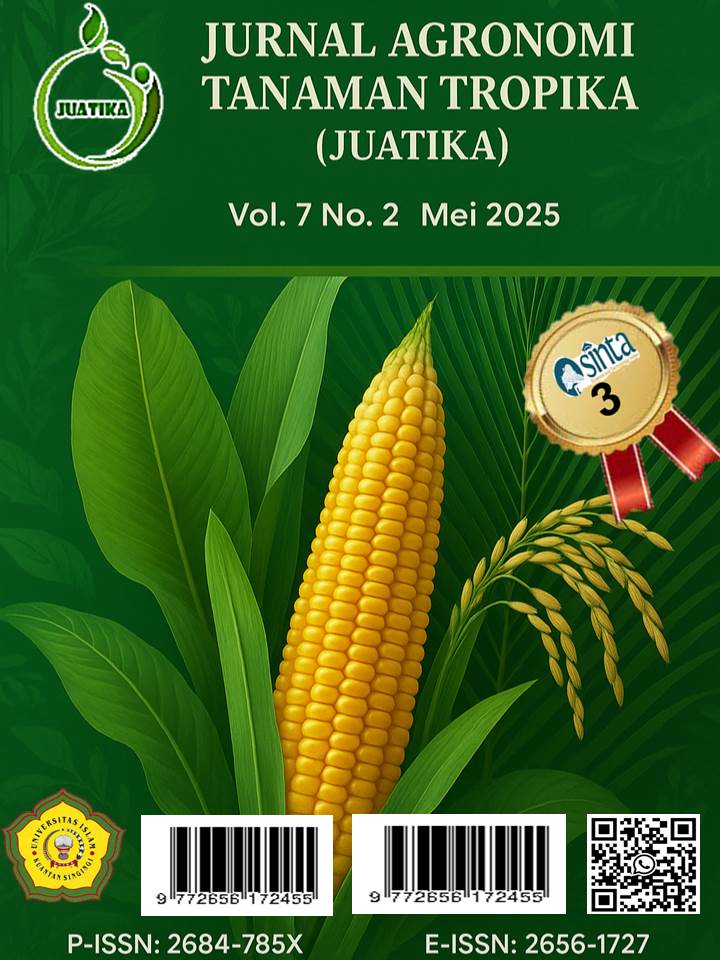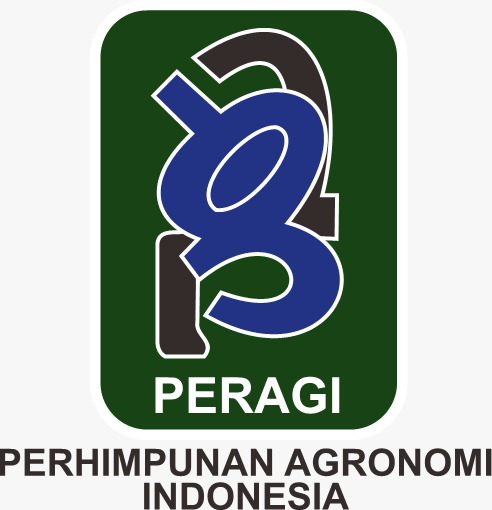The Utilization of Sawdust and Various Decomposers as Raw Materials for Organic Fertilizer Production
Abstract
Sawdust is an abundant material in rural areas of Lima Puluh Kota Regency, making its utilization an effective way to prevent it from being wasted. Sawdust also has great potential to enrich soil with essential elements needed by plants. The process of making organic fertilizer typically involves the addition of microorganisms to accelerate the decomposition of organic materials. One of the challenges in producing and developing organic fertilizer is selecting the right decomposer to ensure that the composting process does not take too long and can be quickly applied and utilized by farmers. This study aims to identify the best decomposer capable of breaking down and accelerating the composting process of sawdust waste. The study used a Completely Randomized Design with the following treatments: sawdust:chicken manure (2:1) + bioactivator, sawdust:chicken manure (2:1) + bio tanduria, sawdust:chicken manure (2:1) + m21 dan sawdust:chicken manure (2:1) + Trichoderma sp. Observation parameters: compost maturation time (days), texture, color, moisture and temperature. From all observations of sawdust compost, treatment A2 (sawdust:chicken manure (2:1) + bio tanduria) showed the best results, and the composting time was also relatively short.
Downloads
References
Chan, S. R. O. S. C., Achmad, B. S., & Ferdinant. (2022). Pemanfaatan berbagai limbah organik sebagai bahan baku pembuatan kompos menggunakan decomposer M21. Jurnal Agrium, 20(4), 331–335.
Chan, S. R. O. S. C., Achmad, B. S., Ferdinant, & Fambari, R. L. (2024). Analysis nutrient content of stem banana compost as organic fertilizer. Juatika, 6(1), 149–154.
Isroi. (2008). Kompos (Makalah). Balai Penelitian Bioteknologi Perkebunan Indonesia, Bogor.
Okalia, D., Nopsagiarti, T., & Ezward, C. (2018). Tritankos (Triko tandan kosong): The influence of the size of section bunches of empty oil palm against the physical characteristics turned into fertilizer kompos Tritankos (Triko bunches of empty). 16(2), 132–142.
Rahmawati, S. (2003). Karakteristik asam humat dari kompos gambut dan kompos daun karet (Laporan penelitian). Jurusan Tanah, Fakultas Pertanian, Institut Pertanian Bogor.
Suryanti. (2009). Bijak dan cerdas mengelola sampah: Membuat kompos dari sampah rumah tangga. Jakarta: Kanisius.
Syukur, A., & Nur, I. (2006). Kajian pengaruh pemberian macam pupuk organik terhadap pertumbuhan dan hasil tanaman Zingiber officinale. Jurnal Ilmu Tanah dan Lingkungan, 6(2), 12.
Copyright (c) 2025 Sari Rukmana, Benny Satria Achmad, Rovel Lando Fambari , Eka Susila

This work is licensed under a Creative Commons Attribution 4.0 International License.
Authors who publish with Jurnal Agronomi Tanaman Tropika (JUATIKA) agree to the following terms:
Authors retain copyright and grant the Jurnal Agronomi Tanaman Tropika (JUATIKA) right of first publication with the work simultaneously licensed under a Creative Commons Attribution License (CC BY 4.0) that allows others to share (copy and redistribute the material in any medium or format) and adapt (remix, transform, and build upon the material for any purpose, even commercially) with an acknowledgment of the work's authorship and initial publication in Jurnal Agronomi Tanaman Tropika (JUATIKA).
Authors are able to enter into separate, additional contractual arrangements for the non-exclusive distribution of the journal's published version of the work (e.g., post it to an institutional repository or publish it in a book), with an acknowledgment of its initial publication in Jurnal Agronomi Tanaman Tropika (JUATIKA). Authors are permitted and encouraged to post their work online (e.g., in institutional repositories or on their website) prior to and during the submission process, as it can lead to productive exchanges, as well as earlier and greater citation of published work.







 More Information
More Information



